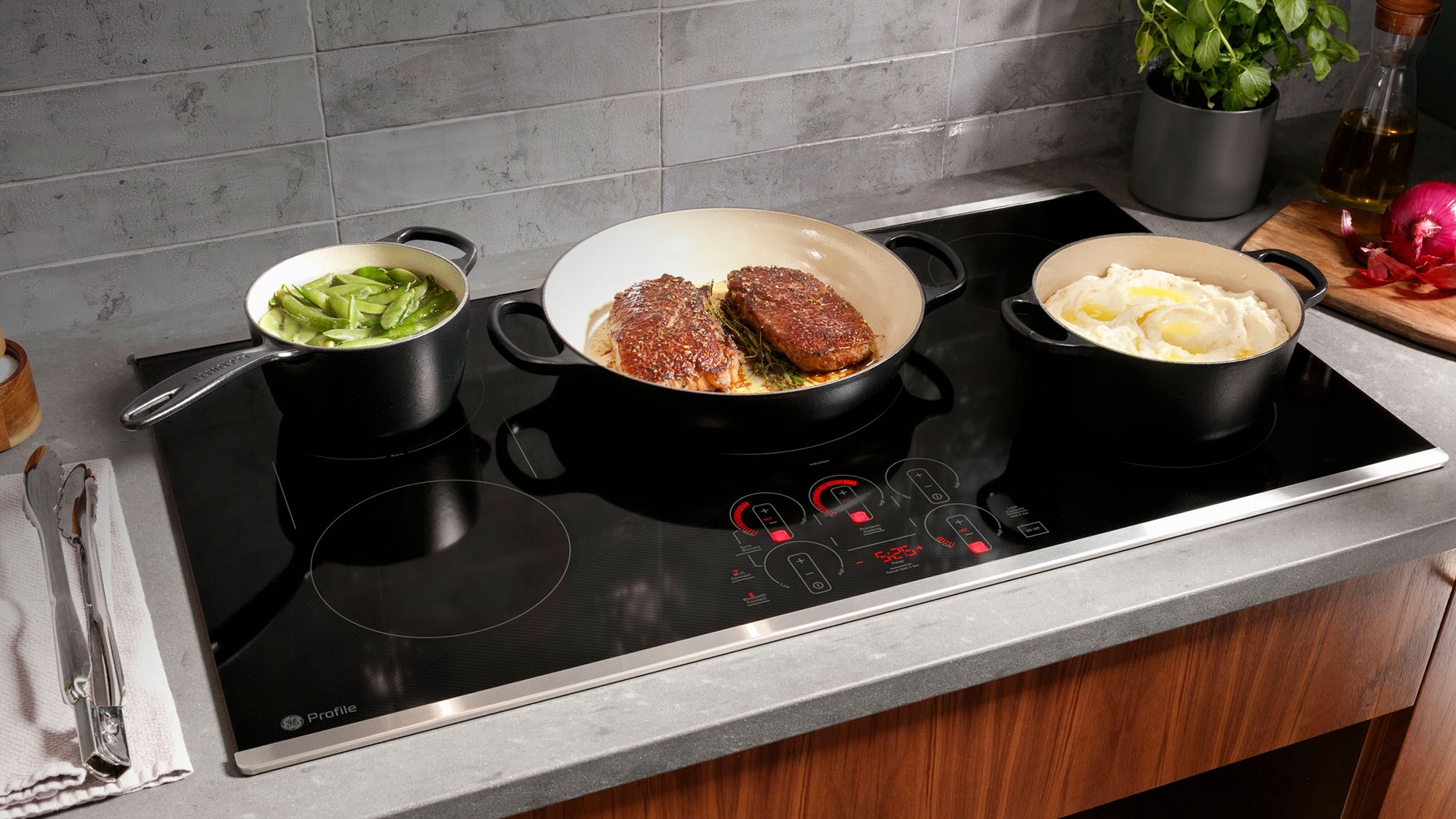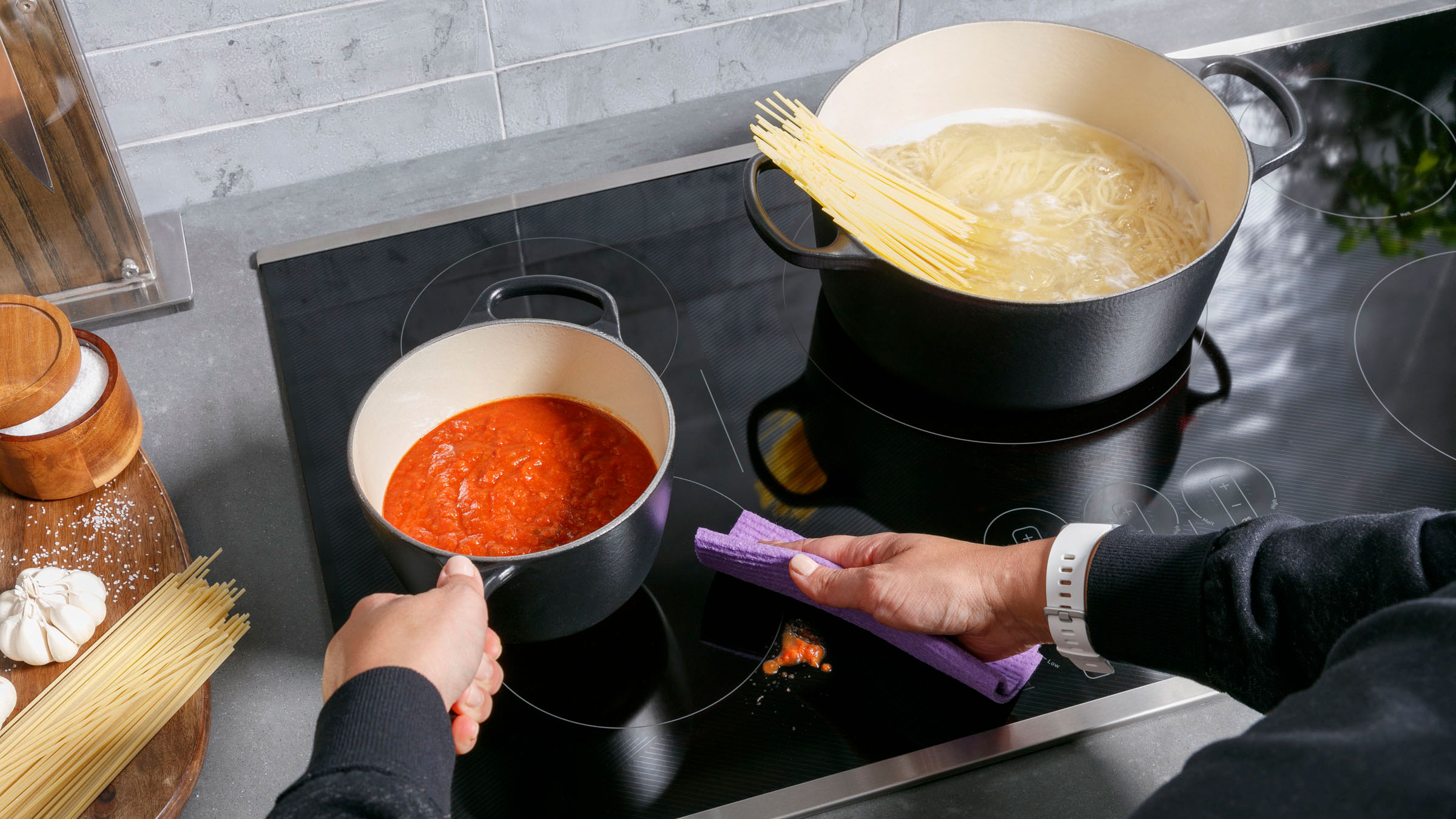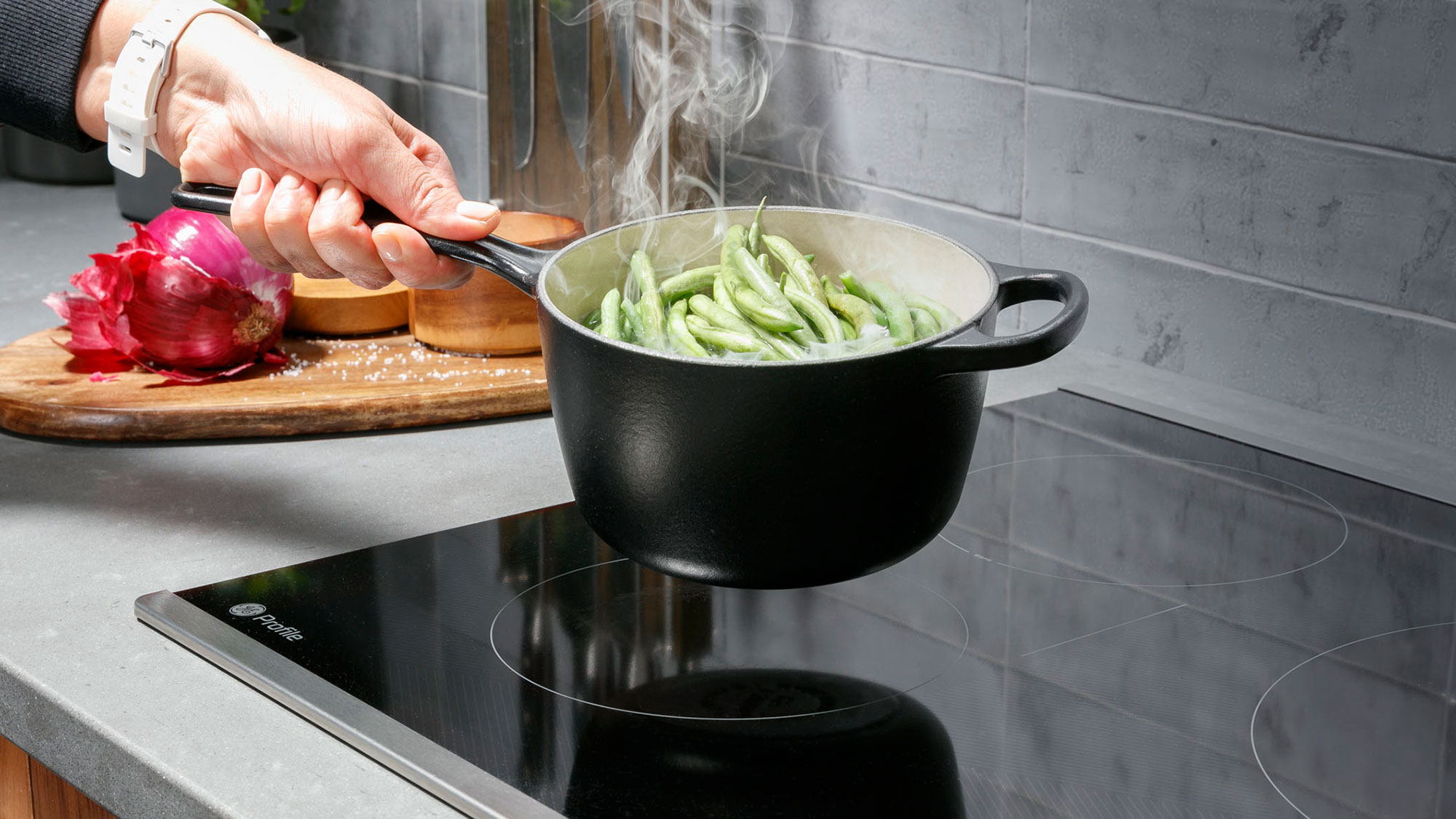
If your electric range or gas range has seen better days, or you’re ripping out your entire kitchen and starting from scratch, you might want to consider swapping to an induction cooktop.
Although induction cooking can take some getting used to, it is a popular choice and worth some serious thought before you opt to replace your previous gas or electric cooktop with a like-for-like model. However, you are bound to have some questions if it’s not a method of cooking you are familiar with.
One issue that can hold people back from investing in an induction cooktop is understanding what cookware can be used and whether you’ll need to ditch your old pans and best cast iron skillet for a new set. Here, we speak to the experts to get the lowdown on what type of pans work with induction cooking and whether you can continue to use cast iron pots.
How does induction cooking work and can you use cast iron cookware?

Firstly, before we explain whether you can use cast iron cookware on an induction cooktop, it’s worth understanding how induction cooking works. Ali Faraji-Tajrishi, principal electrical engineer and induction technical expert at GE Appliances, says, “Induction cooking uses a high-frequency induction coil below the cooktop's smooth surface that heats the cookware using a magnetic field. In order to create the magnetic field and heat the cookware, the bottom of the cookware must have some iron content.”
Thankfully, this means that you can use cast iron on induction cooktops, so if you have a beautiful collection of Le Creuset cookware, you’ll still be able to make good use of it.
What are the benefits of using cast iron pans on an induction cooktop?
Faraji-Tajrishiin explains that the benefit of choosing cast iron pans is its heat retentive properties, “It retains heat very well and offers all the great benefits of cooking on induction — faster, more efficient heating and maximum responsiveness that allow burners to adjust quickly, going from a boil to a simmer in no time.”
You can use cast iron on any cooking surface
Frigidaire also highlights that cast iron is a slow heat conductor and retains heat well, so it allows for even cooking once the cooking temperature is reached.
Apart from the benefits of using cast iron pans on an induction cooktop, Lucy Dunstan, product manager at Smeg, loves its adaptability, “You can use cast iron on any cooking surface —from the oven to the grill to the hob top to a BBQ. It is so versatile.”
Is cast iron as effective as using other types of pans?

Dunstan confirms that cast iron is as effective as other pans when used on an induction cooktop. Although, if you don’t have cast iron in your household you need to make sure that your other pans are made of a magnetic material, which Dunstan explains as being “either iron or iron-based, such as steel”.
She adds, “Even ceramic cookware is usually made with an aluminium or stainless steel core, so you can use the ones made with a stainless steel core as they will naturally be suitable for induction.”
If you are in any doubt, Dunstan says there is an easy way to test whether your pan is made of ferrous metal or not — see if a magnet will stick to its bottom. If it does, your cookware can be used on an induction cooktop.
Does the size of your cast iron pan matter?
Whatever type of magnetic pan you use on an induction cooktop, the size of the pan’s base matters. “For best results, use a pan that matches the burner size,” says Faraji-Tajrishi. “Cookware larger than the burner may be used; however, heat will only be created directly above the burner element ring.”
For the best results, use a pan that matches the burner size
Dunstan also adds, “If your pan is too small compared to the size of the burner, it might not heat up, and if it is too big, the contents won’t heat evenly. So, for best results, you should choose cookware closest to the size of the zone you want to use.”
What about using a cast iron skillet?
Cast iron skillets can also be used on induction hobs, but Dunstan advises that for best results, your skillet should be close in size to the burner zone. “Some cookware manufacturers recommend preheating skillets, but make sure it is not so hot that the oil starts to smoke! If that happens, then take it off the heat to cool it a bit before you start cooking,” she says.
Will cast iron scratch the cooktop?

There’s certainly a difference between using a gas stovetop with heavy grates and a glass stovetop. You automatically use the appliance with much more care when placing pots on top. This is clearly advice that both Faraji-Tajrishi and Dunstan give, as glass hob tops can scratch easily.
How to prevent scratches
To prevent scratches Faraji-Tarrishi recommends users “lift the pot or pan versus sliding it across the cooktop.” While Dunstan recommends the same, she also suggests checking the underside of your cookware to make sure it is smooth and any food residue is removed.
Can you place a protector between the pan and the cooktop?
There are products available on the market that you can place between your cooktop and pans to protect the cooktop surface from scratches. I was interested to discover our experts' thoughts.
“We do not recommend any material between the cooktop and the pan. Although they may be approved for use at higher temperatures — usually the temperature limit is 350-450°F — the cooking surface could get hotter than this,” says Faraji-Tajrishi.
Dunstan was also reluctant to recommend the protectors as it’s not a product that Smeg has tested.







